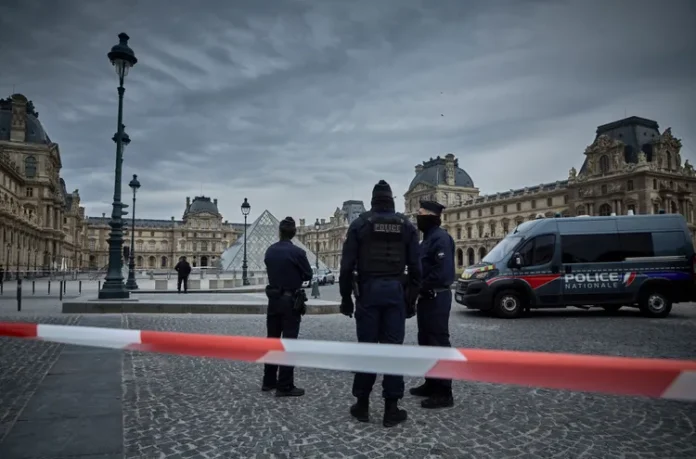
Two suspects have been arrested in connection with the theft of crown jewels worth an estimated €88 million from the Louvre Museum in Paris, French media reported on Sunday.
The brazen daylight robbery has sent shockwaves through France and raised serious questions about museum security. According to the Paris prosecutor’s office, one of the men was detained at Charles de Gaulle Airport as he prepared to board a flight to Algeria.
The second suspect, reportedly en route to Mali, was apprehended later the same evening. Both are now in police custody and can be questioned for up to 96 hours under French law.
DNA evidence collected at the scene played a crucial role in identifying one of the suspects. Investigators found gloves, a high-visibility jacket, and other items believed to have been left behind by the gang.
Among the stolen artifacts was a diamond-encrusted tiara once worn by Empress Eugénie, wife of Napoleon III, as well as the Marie-Louise necklace and several other priceless jewels.
The thieves struck last Sunday at around 9:30 a.m., shortly after the museum opened. They reportedly used a vehicle-mounted lift to reach a first-floor balcony overlooking the River Seine, cutting through a window to access the Gallery of Apollo.
Within minutes, they threatened security guards, smashed display cases with power tools, and escaped on two waiting scooters by 9:38 a.m.
France’s Justice Minister acknowledged on Friday that security protocols had “failed,” leaving the country with what he described as a “terrible image.” Preliminary reports have revealed that nearly a third of the rooms in the affected section of the museum had no CCTV coverage.
Louvre Director Laurence des Cars admitted to French senators that the exterior camera covering the wall used for entry was pointing away from the balcony, leaving the thieves unmonitored.
She also conceded that much of the museum’s perimeter surveillance was “ageing” and ineffective, allowing the robbers to act undetected until it was too late.
Experts fear the stolen jewels may already have been dismantled or melted down, making recovery almost impossible. “Gold and silver can easily be melted, and gemstones cut into smaller pieces,” Dutch art detective Arthur Brand told the BBC. “Once that happens, tracing them back becomes nearly hopeless.”
In the aftermath, the Louvre has moved some of its most valuable artifacts to the ultra-secure vaults of the Bank of France—located 26 meters underground—to prevent further losses. Authorities have also ordered tightened security measures across France’s cultural institutions amid growing public pressure.
The Paris prosecutor’s office has criticized the “premature disclosure” of details surrounding the investigation, warning that such leaks could hinder recovery efforts.
For now, as police continue their search for the remaining suspects, France’s most famous museum faces intense scrutiny and a bruised reputation.